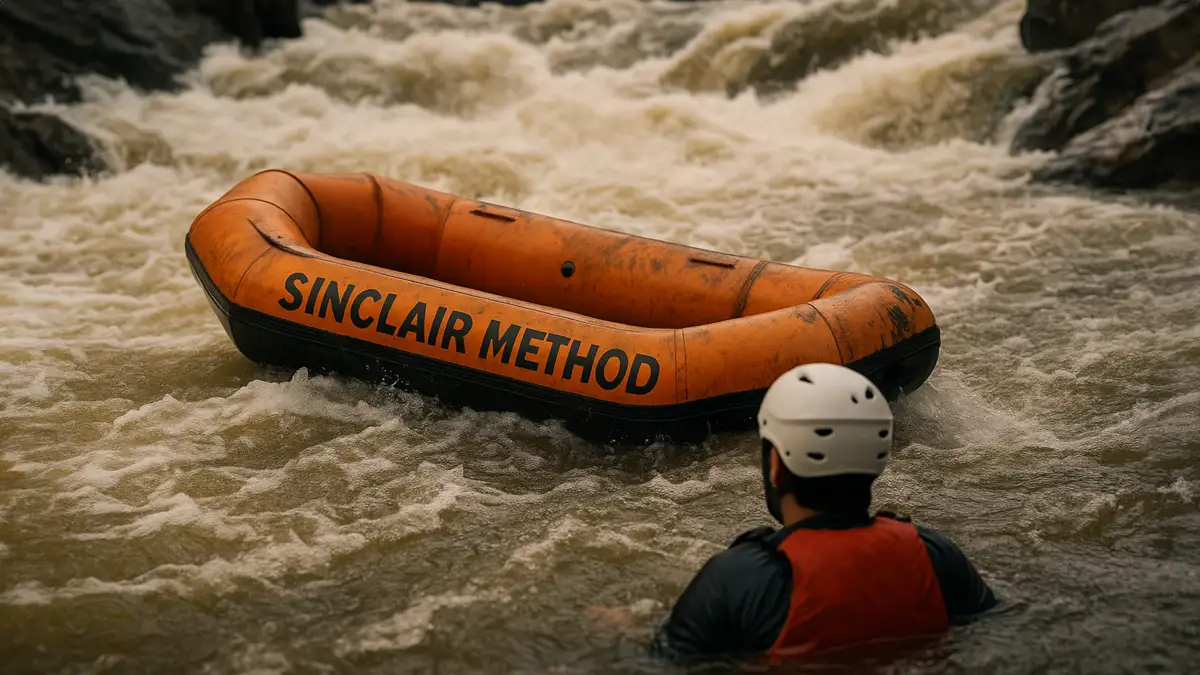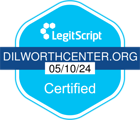June 17, 2025
The Sinclair Method: Why Drinking on Naltrexone Falls Short

Alcoholism is bio-psycho-social-spiritual.The Sinclair Method (TSM) focuses on the biological reward circuit but neglects trauma, mental-health comorbidities, social isolation, and spiritual vacancy—the very drivers of addiction. Without therapy or 12-step work, individuals risk becoming “dry drunks,” drinking less but still trapped in resentment, fear, or depression.
Google searches for the Sinclair Method (“sinclair method naltrexone,” “sinclair method alcohol,” “alcohol sinclair method”) promise an 80 % “success” rate and a simple formula: take naltrexone one hour before every drink and watch your craving fade away. 1 At first glance, it sounds like a quick fix—keep drinking, pop a pill, and let naltrexone extinguish addiction. Dilworth Center, however, views the method as an unsafe shortcut that overlooks the complex roots of Alcohol Use Disorder (AUD). Here’s why.
1. What Is the Sinclair Method?
Developed by neurobiologist Dr. John D. Sinclair in the 1980s, the protocol pairs continued drinking with targeted doses of naltrexone 50 mg (or nalmefene in Europe). The idea—called “pharmacological extinction”—is that by blocking opioid receptors each time alcohol is consumed, the brain slowly unlearns the reward.2 Supporters claim this leads to a dramatic drop in consumption without requiring abstinence.
2. Not Recognized in Major Treatment Guidelines
No U.S. or European guideline lists the Sinclair Method as a first-line regimen. A 2024 clinical‐pharmacy review notes that “the Sinclair Method is not recommended in any evidence-based AUD pharmacotherapy guideline due to limited high-quality research.”3 Standard references (SAMHSA, NIAAA, NICE) advise naltrexone as daily or monthly dosing combined with counseling—not intermittent “take-before-drinking” use.4
3. Compliance: The Achilles’ Heel
- One-hour rule: TSM requires swallowing naltrexone at least 60 minutes before every drinking episode.1
- Skip the pill, skip the block. Craving often peaks before alcohol is ingested; in that moment many simply drink without the pill. Failure to dose undermines extinction and re-primes the reward loop.5
- Lifetime commitment. Advocates admit naltrexone should be taken for life, because stopping can allow reward pathways to rebound—yet long-term adherence to any daily or pre-drinking routine is notoriously poor.6
Real-world data bear this out: studies show almost half of patients discontinue naltrexone within three months for side-effects, forgetfulness, or desire to feel alcohol’s buzz again.7 If compliance falters, TSM’s touted 80 % “success” evaporates.
4. Continued Drinking Still Harms the Body
Naltrexone blunts euphoria but does not neutralize alcohol’s toxic effects. Liver inflammation, cancer risk, impaired driving, and relationship damage persist. Some TSM users attempt to “drink through” the blockade by consuming larger quantities, further stressing the liver.8 Dilworth Center believes any method that normalizes ongoing drinking fails the “do no harm” test.
5. Root Causes Remain Untouched
Alcoholism is bio-psycho-social-spiritual. TSM focuses on the biological reward circuit but neglects trauma, mental-health comorbidities, social isolation, and spiritual vacancy—the very drivers of addiction. Without therapy or 12-step work, individuals risk becoming “dry drunks”: drinking less but still trapped in resentment, fear, or depression.9
Contrast that with Dilworth Center’s integrated model: individual and group counseling, family education and counseling, trauma-informed counseling, cognitive behavioral therapy, and 12-Step Facilitation. Medication can support this journey (see Article 1), but it cannot replace it.
6. Possible Rebound Risk
Animal studies show that blocking opioid receptors during abstinence can up-regulate those receptors; if naltrexone is later missed, a binge may produce an even larger dopamine surge.10 While human evidence is limited, the theoretical risk underscores the importance of professional oversight and comprehensive relapse-prevention planning.
7. What the Research Really Shows
| Outcome | Daily Naltrexone (Standard) | Sinclair Method |
|---|---|---|
| Heavy-drinking days ↓ | 10–15 % reduction vs. placebo (meta-analysis) | Limited RCTs (Randomized Control Trials); reduction varies, small samples |
| Abstinence rates | No significant change without counseling | Not measured (goal is moderation) |
| Long-term data (>12 mo) | Modest benefit when combined with therapy | Insufficient evidence |
| Guideline endorsement | Yes (FDA, SAMHSA, NICE) | No |
Compiled from systematic reviews and practice guidelines.3,4,7
Dilworth Center’s Bottom Line
“There is simply no chemical shortcut to genuine recovery. Medications like naltrexone have a place—but are most effective counseling, connection, and a program of action.”
Because the Sinclair Method hinges on continued drinking and fragile compliance, Dilworth Center does not endorse it as safe or effective. If you've tried TSM and not gotten the results you were hoping for, please know that Dilworth Center is here and can help you find happiness in recovery.
References
- Verywell Mind. “How the Sinclair Method for Alcohol Addiction Recovery Works.” Updated May 15 2023. verywellmind.com
- Sinclair JD. “Method for Treating Alcohol-Drinking Response.” Alcohol and Alcoholism 1989;24(1): 1–7.
- U.S. Pharmacist. “Naltrexone for the Treatment of Alcohol Use Disorder in the Primary Care Setting.” 2018. uspharmacist.com
- SAMHSA. “Medications for Substance Use Disorders.” 2023. samhsa.gov
- Thrive Alcohol Recovery. “Sinclair Method FAQs: Common Mistakes to Avoid.” 2022. thrivealcoholrecovery.com
- Renew Health. “The Sinclair Method: A Comprehensive Guide to Naltrexone-Assisted Alcohol Reduction.” Feb 5 2025. renewhealth.com
- Sawicka M et al. “Naltrexone Efficacy in Treating Alcohol-Use Disorder.” Ther Adv Psychopharmacol 2017;7(8-9):211-24.
- Hanley Center. “The Case Against the Sinclair Method.” 2019. hanleycenter.org
- Cochrane Review. “Alcoholics Anonymous and 12-Step Facilitation for Alcohol Use Disorder.” 2020. cochrane.org
- Sinclair Method UK. “How the Sinclair Method Works – Part Two.” 2022. sinclairmethoduk.com








